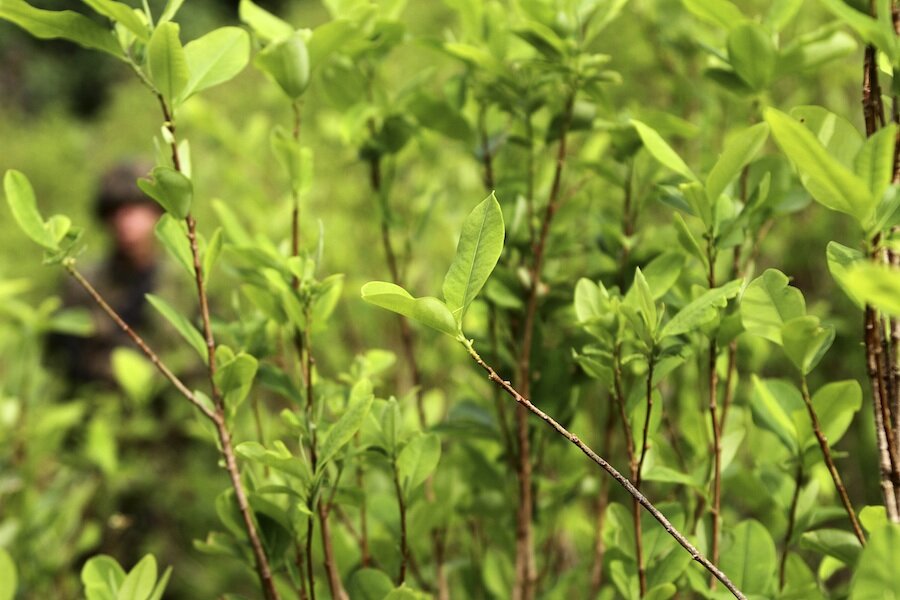First coca plantation discovered in Mexico. Cutting out the middleman?
Loading...
| TUXTLA GUTIERREZ, Mexico
The seizure of 1,639 coca plants in southern Mexico marks the first known instance of the raw ingredient for cocaine being cultivated in the country, Mexican and UN officials said Wednesday.
Mexico is home to various drug cartels that traffic large quantities of cocaine toward the United States, but coca itself is typically grown in the Andean region. The find raised concerns that it could be a test of the viability of reducing dependence on South American suppliers.
"It's a pretty troubling discovery," said Antonio Mazzitelli, the Mexico representative of the UN Office on Drugs and Crime. He added that it could amount to "a small-scale experiment to see if there's a possibility of replicating" coca cultivation in Mexico.
Both he and Mexican Gen. Sergio Martinez, commander of the 36th military zone in the southern state of Chiapas, confirmed that the coca plantation is a first for Mexico. Previously, Mazzitelli said, only labs that processed coca into cocaine had been found in the country.
Soldiers and agents discovered the plants in the town of Tuxtla Chico near the border between Guatemala and Chiapas, a mountainous state known for its coffee plantations.
An agent at the Mexican Attorney General's Office, who was not authorized to discuss the case and spoke on condition of anonymity, said the find came due to an anonymous phone tip and interrogation of three suspects who were detained with about 400 pounds (180 kilograms) of coca leaf in the southern city of Tapachula.
Although native to the Andes, where it can be found from Panama to Argentina, the coca bush is very resilient and can survive anywhere climatic conditions are right.
"It grows well anywhere, say, tea can grow," said Paul Gootenberg, the author of "Andean Cocaine" and a Latin America historian at the State University of New York at Stony Brook.
"Ecologically, coca is far more malleable than most people think," he said via email.
The Dutch, Japanese, and British grew coca in Asian colonies in the early 20th century. Dutch Java, now part of Indonesia, glutted the world market with 1,700 tons of coca leaf in 1920, according to Gootenberg. The British grew it in Ceylon, and the Japanese in Formosa, now Taiwan.
Mazzitelli said this week's discovery could be an attempt to diversify beyond current crops such as poppies, which are used to make opium and heroin.
Mazzitelli said important details about the coca seizure have not yet been made public, such as what variety the plants were, where they may have been imported from, whether they were genetically modified and how mature they were.
Large quantities of coca leaves are required to generate coca paste, and it takes a couple of years for a plant to become productive, he added.







